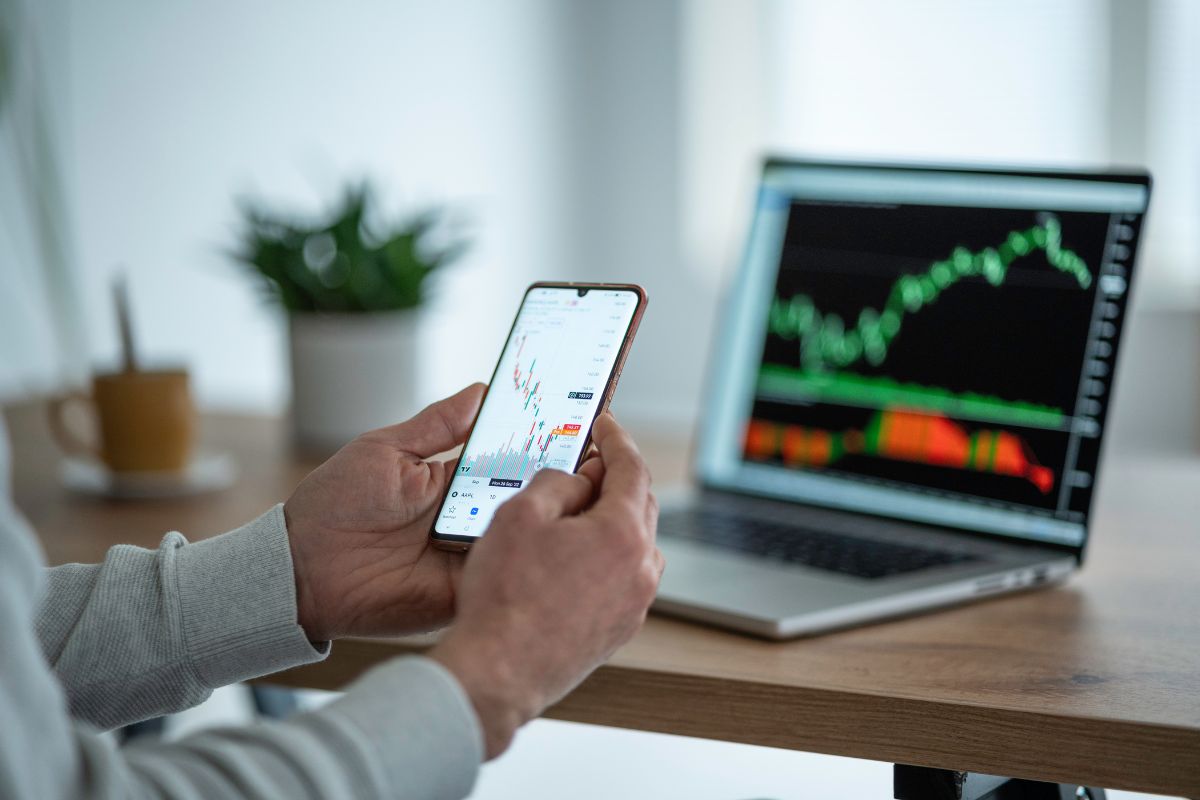Last month, my neighbour Steve turned up at my doorstep wearing quite a sheepish expression. “I’ve done something stupid with money,” he says. He’d ended up blowing three grand trying to day trade after watching some YouTube bloke in a Lamborghini guaranteeing easy money.
Poor Steve figured out the hard way that trading isn’t as easy as those get-rich-quick-for-free online ads would have you believe. If you are considering trading for yourself, here are some trading tips for beginners that might help you avoid Steve’s fate.
Start With Paper Before Real Money
First, don’t be an idiot and immediately fling your life savings at it. Most trading platforms allow you to trade with fake money first. It’s called paper trading, and frankly, it is one of the best ways to learn without losing your shirt. I took a run at this myself last year. Opened a paper trading account with £10,000 of pretend money and went mental buying everything that looked good.
Lost half of it in two weeks. Good job that wasn’t real cash, or my wife would have buried me in the garden. How to learn trading for free starts with these practice accounts. They’re available on every major platform, including Trading 212, IG, and Plus500. Take at least three months to get comfortable with that before you start trading real money.
The Reality Check Nobody Talks About
Here’s something that those free trading tips for beginners websites won’t tell you: most people lose money. Seriously. Studies indicate that some 80% of day traders end up poorer than when they started. And my brother-in-law Richard has been doing it for five years. He’s made money exactly twice.
Still harps on about those two wins and forgets the dozens of losses. Classic confirmation bias, that. Don’t get sucked into the gambling mentality. This isn’t the lottery where you might get lucky. It’s more like running a business; you need proper planning and realistic expectations.
How to Start Trading in the Stock Market Without Going Mental
Right, if you’re determined to give this a go, here’s how to do it sensibly. First, only use money you can afford to lose completely. I’m talking money that, if it vanished tomorrow, wouldn’t stop you paying rent or buying groceries. Even with just £2 a day, you can start building a trading account.
That’s sixty quid a month – less than most people spend on takeaways. Build it up slowly rather than dumping your entire bonus into it. Open an account with a properly regulated broker. In the UK, make sure they’re FCA registered. Don’t go with some dodgy offshore outfit promising zero fees – there’s usually a catch.
Forex Trading Tips for Beginners (Spoiler: It’s Harder Than Stocks)
Steve’s mistake was jumping straight into forex trading. Currency markets are mental – they move so fast your head will spin. Plus, they’re open 24/7, which means you’ll be checking your phone at 3 am, watching your Japanese yen position tank. If you must trade forex, start tiny.
I’m talking £1 per pip. Yes, the profits will be microscopic, but so will the losses while you’re learning. Stick to major currency pairs like GBP/USD or EUR/GBP. The exotic pairs might look exciting, but they’re basically financial suicide for beginners.
The Education Bit (Don’t Skip This)
Proper trading courses for beginners don’t come free, but they’re worth every penny if they stop you making expensive mistakes. I did one through IG Markets – cost me £200 but probably saved me thousands in losses. YouTube’s decent for basics, but be careful who you listen to.
If someone’s selling a “foolproof system” or posing with rented Ferraris, run away. Proper traders are usually quite boring people who talk about risk management, not Rolexes. Books are brilliant too. “Trading for Dummies” sounds embarrassing, but it’s actually spot on for beginners. Covers everything without the marketing nonsense.
Risk Management: The Boring Bit That Saves Your Bacon
The 7% rule is straightforward: sell a stock as soon as its price drops by 7%. Sounds harsh, but small losses are easy to recover from. Big losses will wipe you out. Never risk more than 2% of your account on a single trade. So if you’ve got £1,000, don’t risk more than £20 per trade.
Seems tiny, but it keeps you in the game when things go wrong. Set stop losses on every trade. This automatically sells your position if it drops to a certain level. Takes the emotion out of it – no more holding onto losers hoping they’ll come back.
The Platform Question
Opening a brokerage account with a reputable UK firm is essential. I’ve used most of them – Trading 212’s good for beginners, IG’s more advanced, Hargreaves Lansdown’s pricey but solid. Avoid anything with complicated fee structures. You want simple per-trade costs you can understand. Hidden charges will eat into your profits faster than you’d believe.
What Steve Wishes He’d Known
Six months later, Steve’s doing much better. He started again with £500, practised for ages on demo accounts, and actually reads company reports now instead of following Twitter tips. “I was trying to get rich quick,” he told me last week. “Now I’m just trying not to get poor slowly.”
Smart trading tips for beginners boil down to this: start small, learn properly, expect losses, and never risk money you need for living. Trading can work, but only if you treat it like the serious business it is. And if someone promises you’ll double your money in a month? Do what Steve should’ve done – close the laptop and put the kettle on instead.








